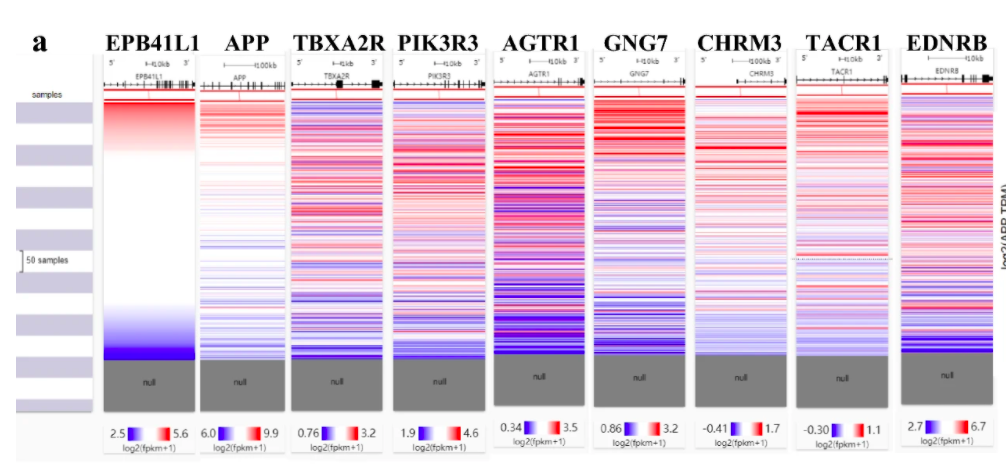Abnormal expression and prognostic significance of EPB41L1 in kidney renal clear cell carcinoma
Liang T, Sang S, Shao Q, Chen C, Deng Z, Wang T, & Kang Q. Abnormal expression and prognostic significance of EPB41L1 in kidney renal clear cell carcinoma based on data mining. Cancer Cell International. (2020)
How they used Xena
They used Xena to help make Figure 7, where they analyzed EPB41L1 and hub genes in KIRC.

Figure 7a from the paper
Join the conversation on Twitter about this publication
Paper
Background
EPB41L1 gene (erythrocyte membrane protein band 4.1 like 1) encodes the protein 4.1N, a member of 4.1 family, playing a vital role in cell adhesion and migration, which is associated with the malignant progression of various human cancers. However, the expression and prognostic significance of EPB41L1 in kidney renal clear cell carcinoma (KIRC) remain to be investigated.
Methods
In this study, we collected the mRNA expression of EPB41L1 in KIRC through the Oncomine platform, and used the HPA database to perform the pathological tissue immunohistochemistry in patients. Then, the sub-groups and prognosis of KIRC were performed by UALCAN and GEPIA web-tool, respectively. Further, the mutation of EPB41L1 in KIRC was analyzed by c-Bioportal. The co-expression genes of EPB41L1 in KIRC were displayed from the LinkedOmics database, and function enrichment analysis was used by LinkFinder module in LinkedOmics. The function of EPB41L1 in cell adhesion and migration was confirmed by wound healing assay using 786-O cells in vitro. Co-expression gene network was constructed through the STRING database, and the MCODE plug-in of which was used to build the gene modules, both of them was visualized by Cytoscape software. Finally, the top modular genes in the same patient cohort were constructed through data mining in TCGA by using the UCSC Xena browser.
Results
The results indicated that EPB41L1 was down-expressed in KIRC, leading to a poor prognosis. Moreover, there is a mutation in the FERM domain of EPB41L1, but it has no significant effect on the prognosis of KIRC. The co-expressed genes of EPB41L1 were associated with cell adhesion and confirmed in vitro. Further analysis suggested that EPB41L1 and amyloid beta precursor protein (APP) were coordinated to regulated cancer cell adhesion, thereby increasing the incidence of cancer cell metastasis and tumor invasion.
Conclusions
In summary, EPB41L1 is constantly down-expressed in KIRC tissues, resulting a poor prognosis. Therefore, we suggest that it can be an effective biomarker for the diagnosis of KIRC.